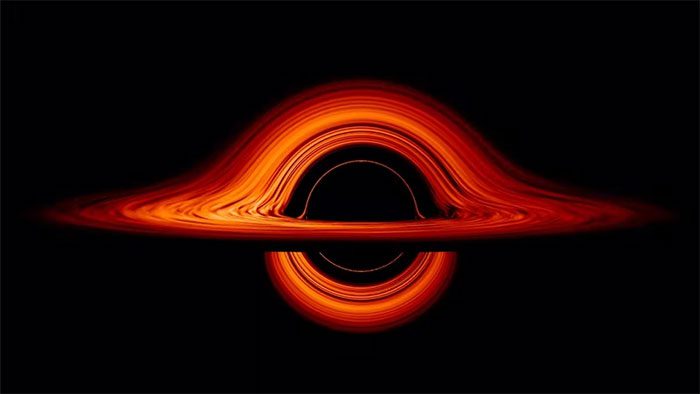A recent study conducted by 17 astronomers across nine countries suggests that black holes may harbor dark energy, the driving force behind the expansion of the universe.
This research, led by the University of Hawaii (USA), was reported by Conversation. The team compared the growth rates of black holes in different galaxies. Contrary to the assumption that dark energy is released into space-time, the group posits that it is generated and exists within black holes, which form when stars die.

Simulation of a black hole, potentially explaining dark energy. (Image: NASA).
The researchers compared the mass of black holes in young galaxies—where stars are still forming—with the mass of black holes in giant, inactive galaxies—where no new stars are being born, as reported by the Guardian.
In young galaxies, black holes can grow by consuming nearby stars and matter. In contrast, in older galaxies, there is less material for black holes to accrete.
Scientists discovered that the black holes in inactive galaxies have masses 7-20 times greater than expected. They believe this reflects the process that black holes must undergo as they grow.
In two papers published in the Astrophysical Journal and Astrophysical Journal Letters, the researchers noted that these findings could be explained if black holes grow as the universe expands. They argue that the observed expansion of celestial objects may be due to black holes carrying the core of dark energy, the mysterious “force” behind the accelerating expansion of the universe.
“We suggest that black holes are a source of dark energy. This dark energy is generated when ordinary matter is compressed during the death and collapse of massive stars,” stated Duncan Farrah, an astronomer at the University of Hawaii.
Some independent experts remain skeptical of this new finding. Some argue that while this idea deserves thorough examination, it is still too early to link black holes with dark energy. According to Conversation, scientists infer the existence of dark energy by observing stars and galaxies, but its exact nature and origin remain unclear.





















































